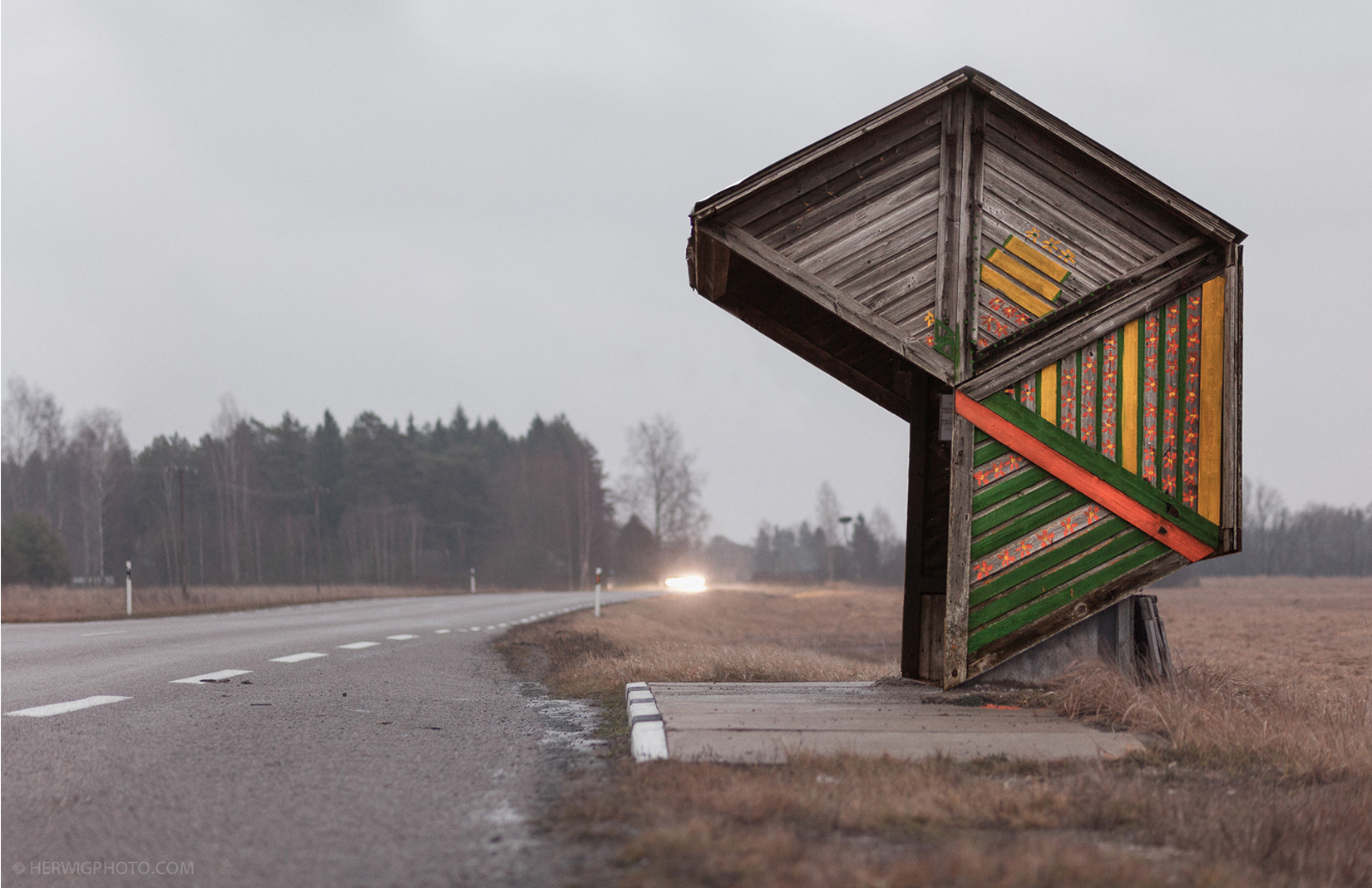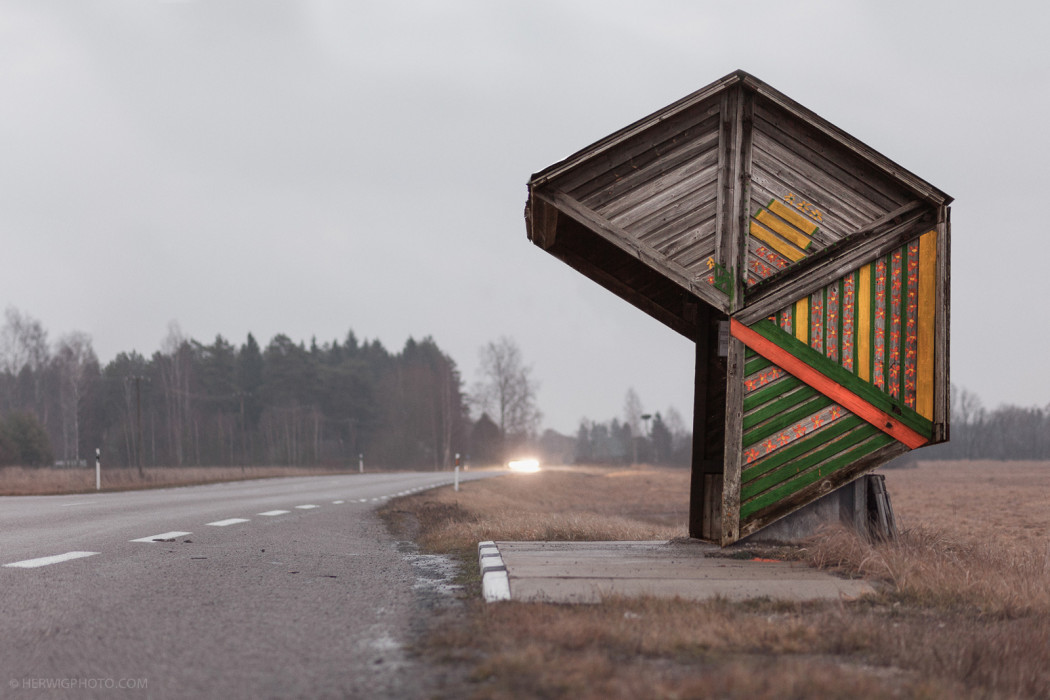
Kootsi, Estonia. Photography: Christopher Herwig
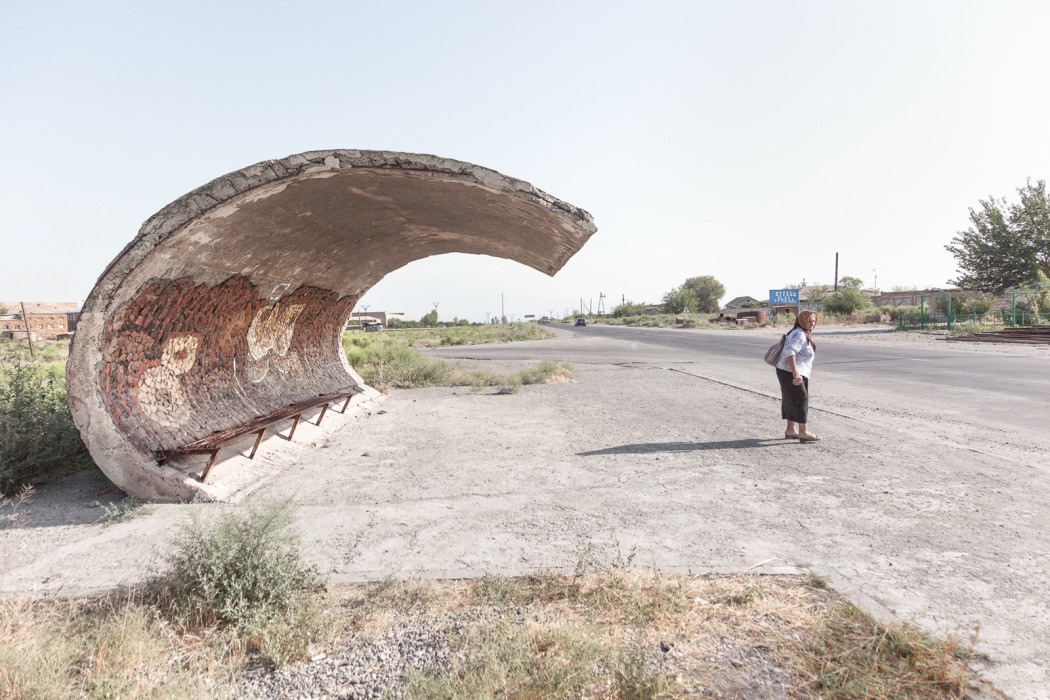
Echmiadzin, Armenia. Photography: Christopher Herwig
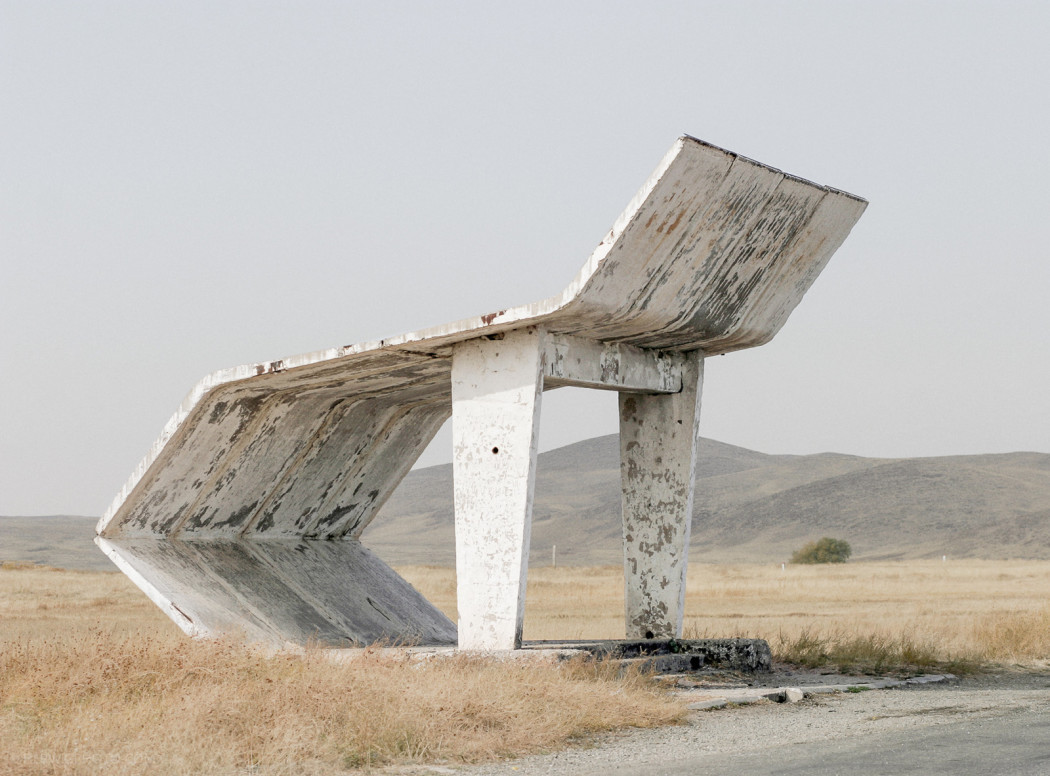
Taraz, Kazakhstan. Photography: Christopher Herwig
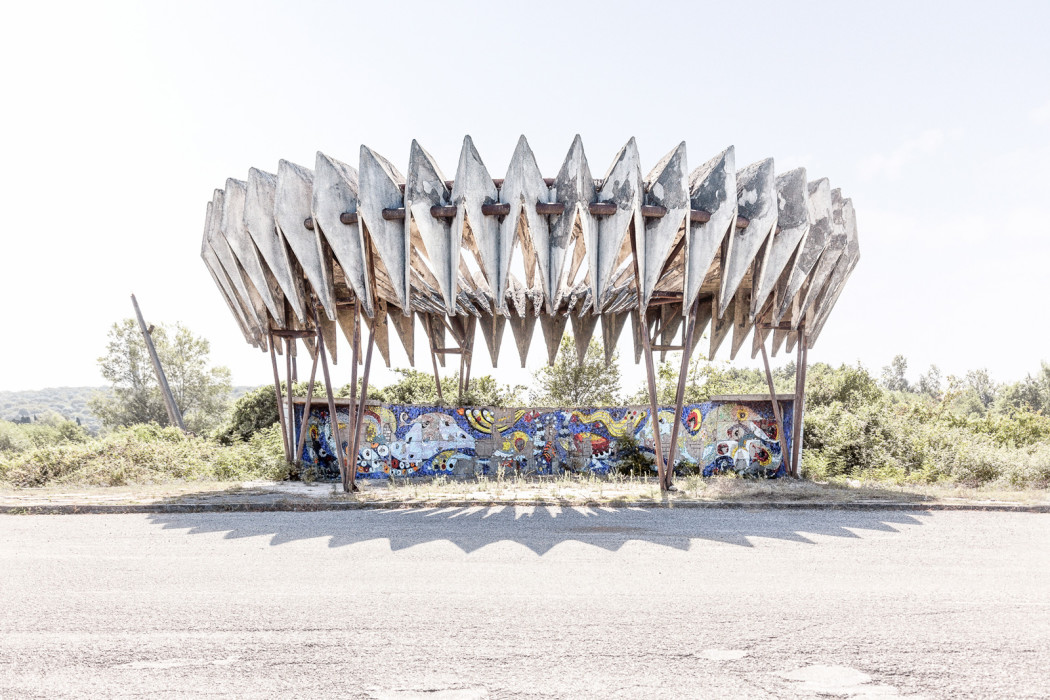
The disputed region of Pitsunda, Gagra, Abkhazia. Photography: Christopher Herwig
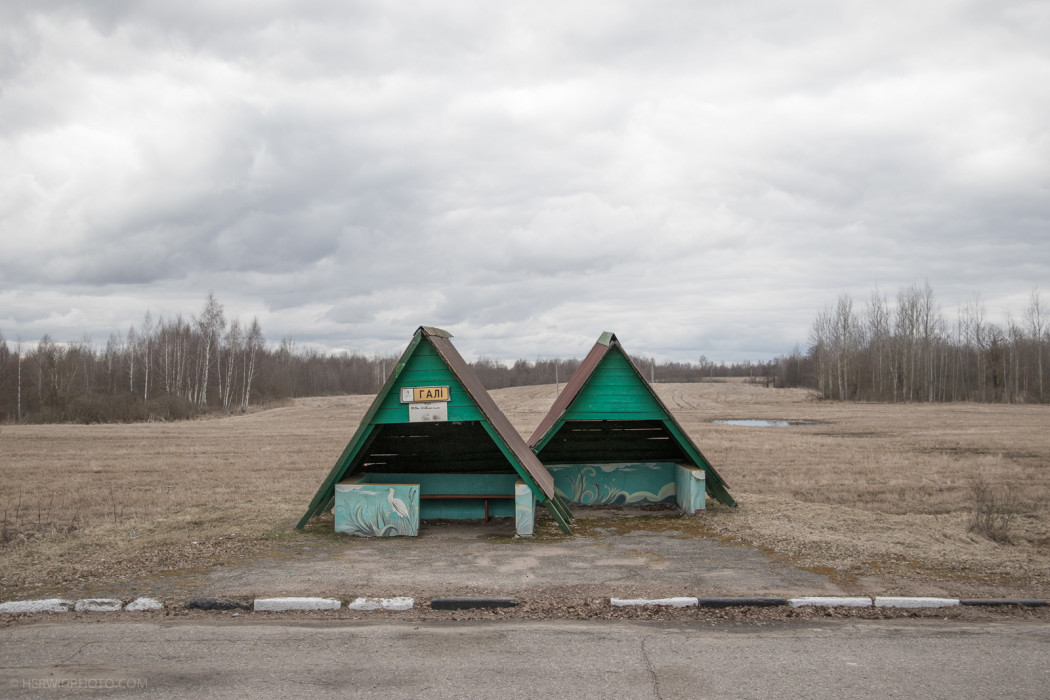
Gali, Belarus. Photography: Christopher Herwig
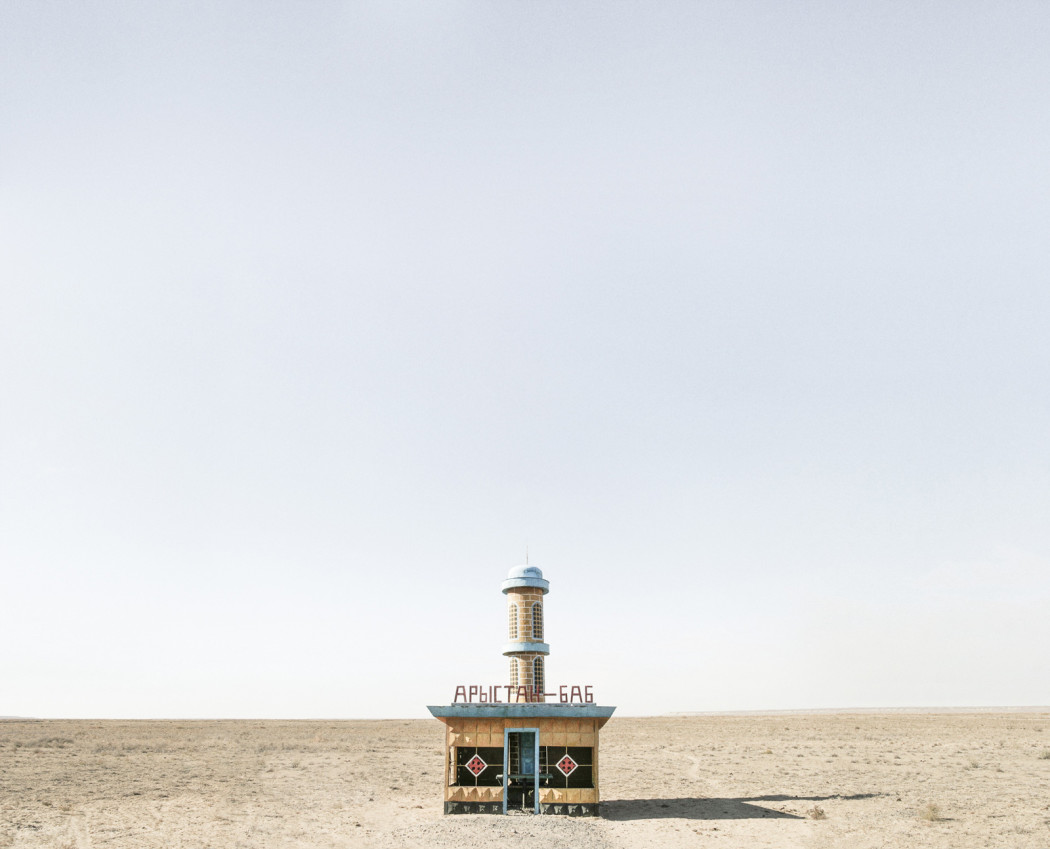
Aralsk, Kazahkstan. Photography: Christopher Herwig
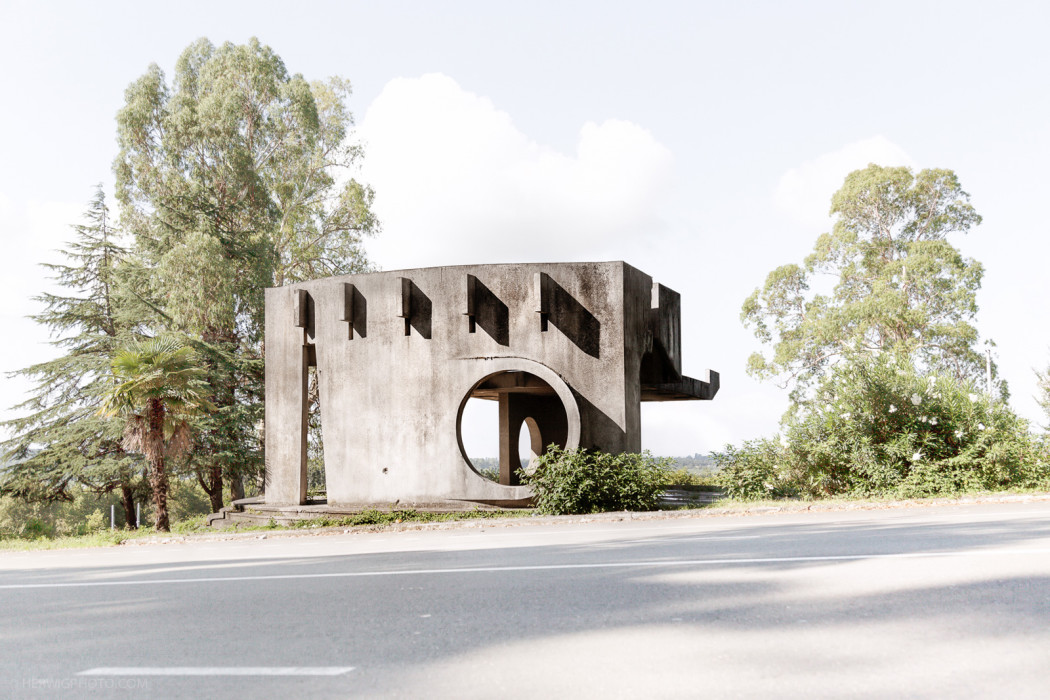
The disputed region of Pitsunda in the Gagra district of Abkhazia. Photography: Christopher Herwig
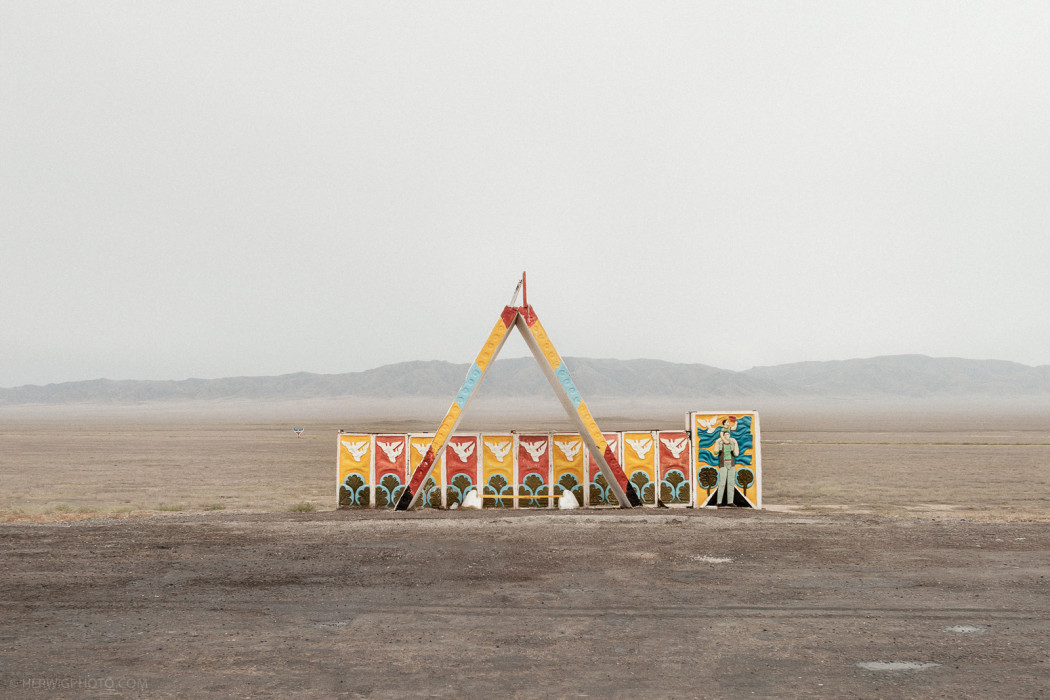
Charyn, Kazakhstan. Photography: Christopher Herwig
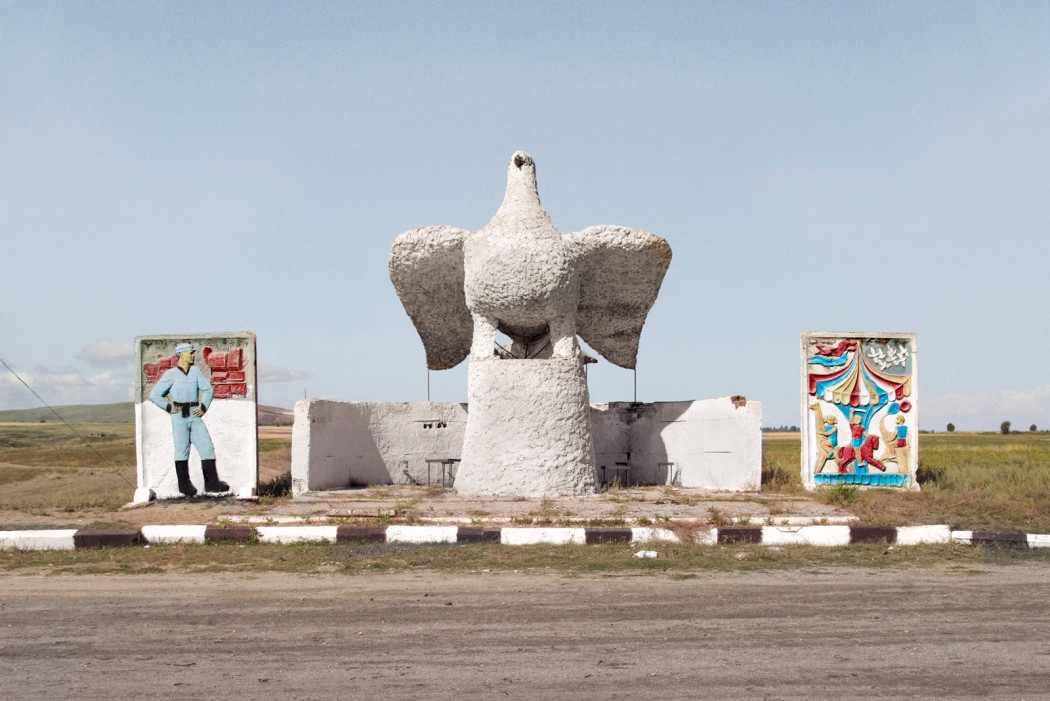
Karakol, Kyrgyzstan. Photography: Christopher Herwig
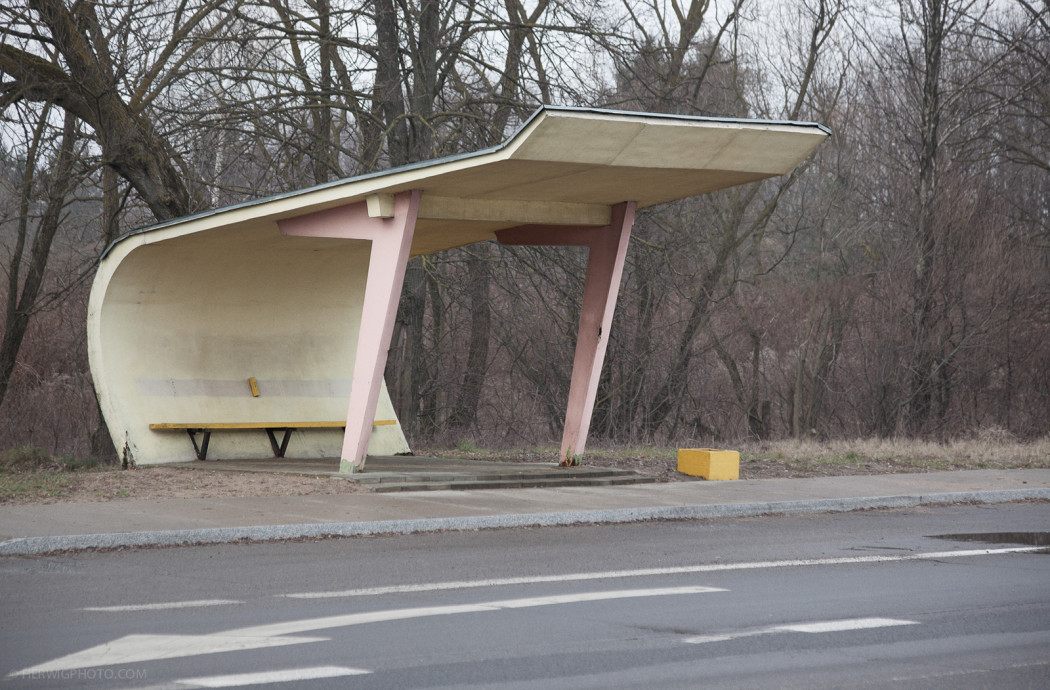
Kaunas, Lithuania. Photography: Christopher Herwig
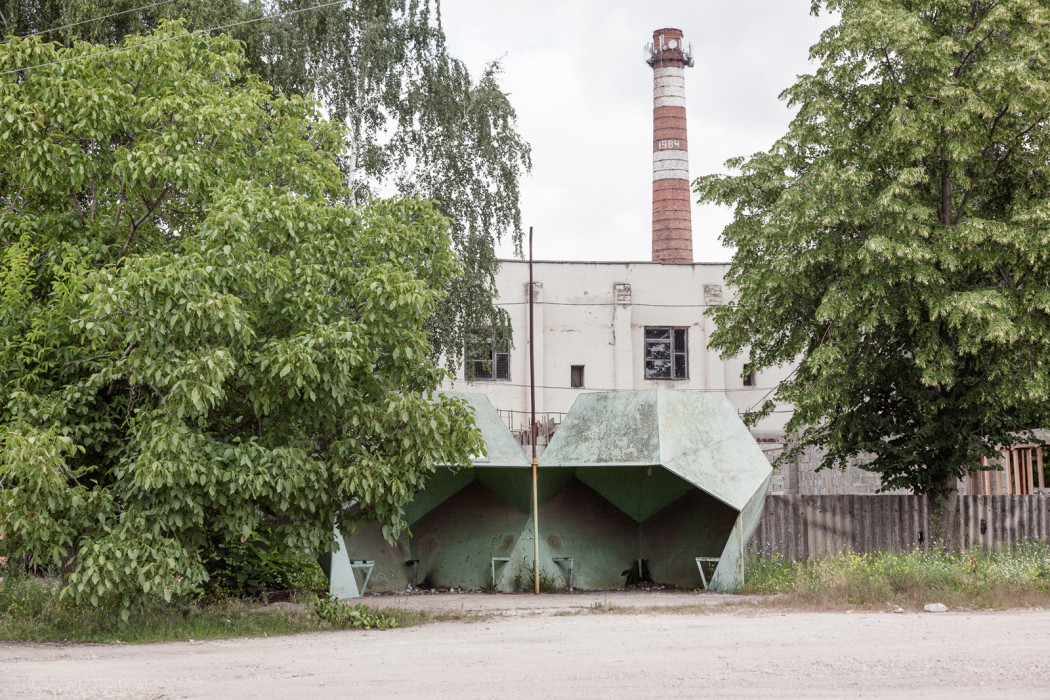
Falesti, Moldova. Photography: Christopher Herwig
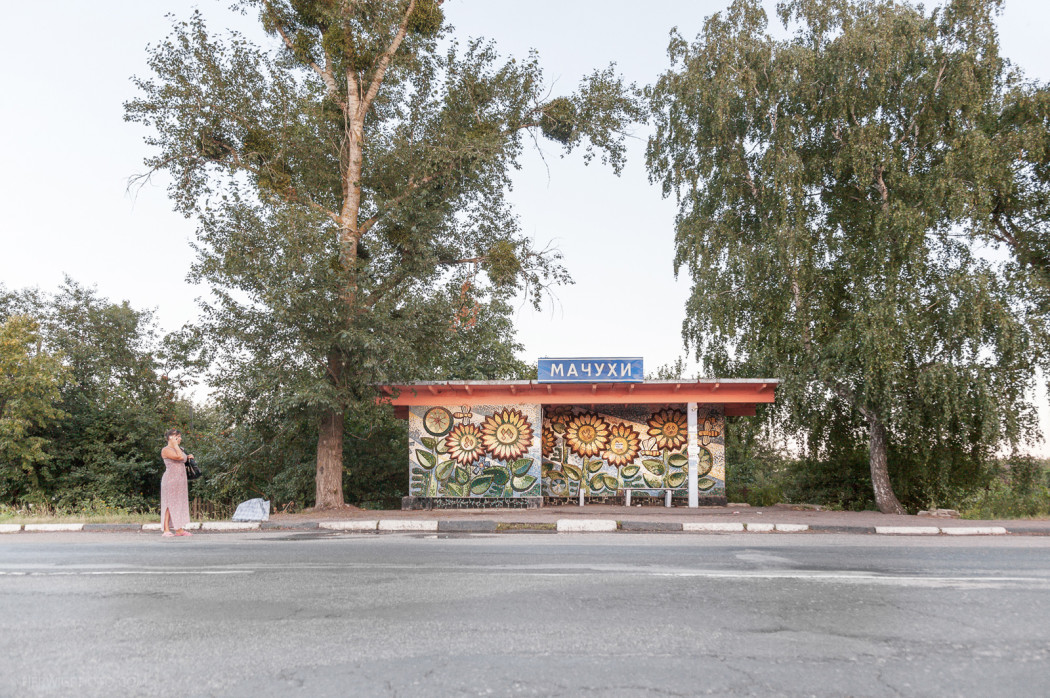
Machuhi, Ukraine. Photography: Christopher Herwig
‘Unexpectedly beautiful’ is how Canadian photographer Christopher Herwig describes the Futurist bus stops of the former USSR.
In 2002, while biking from London to St Petersburg, Herwig challenged himself to take a new photo every hour of his 1,740 mile journey. ‘The bus stops I passed when I entered Lithuania were the perfect subject matter for this game,’ Herwig explains, ‘they had this feeling of the underdog that quietly wanted to be recognised.’
What began as distraction quickly evolved into an expansive photo series that would take him across 14 countries via bus, foot, car and bicycle.
As experimental as England’s 18th-century follies, Soviet-era bus stops were a test bed for upcoming architects, who created increasingly elaborate designs that transcended their purpose. From Space Race excitement to bunker-like structures of nuclear paranoia, these bus stops offer a pseudo-political commentary on Soviet culture at the end of the 20th century.
Here, Herwig tells us more about the project that’s gripped him for more than a decade.
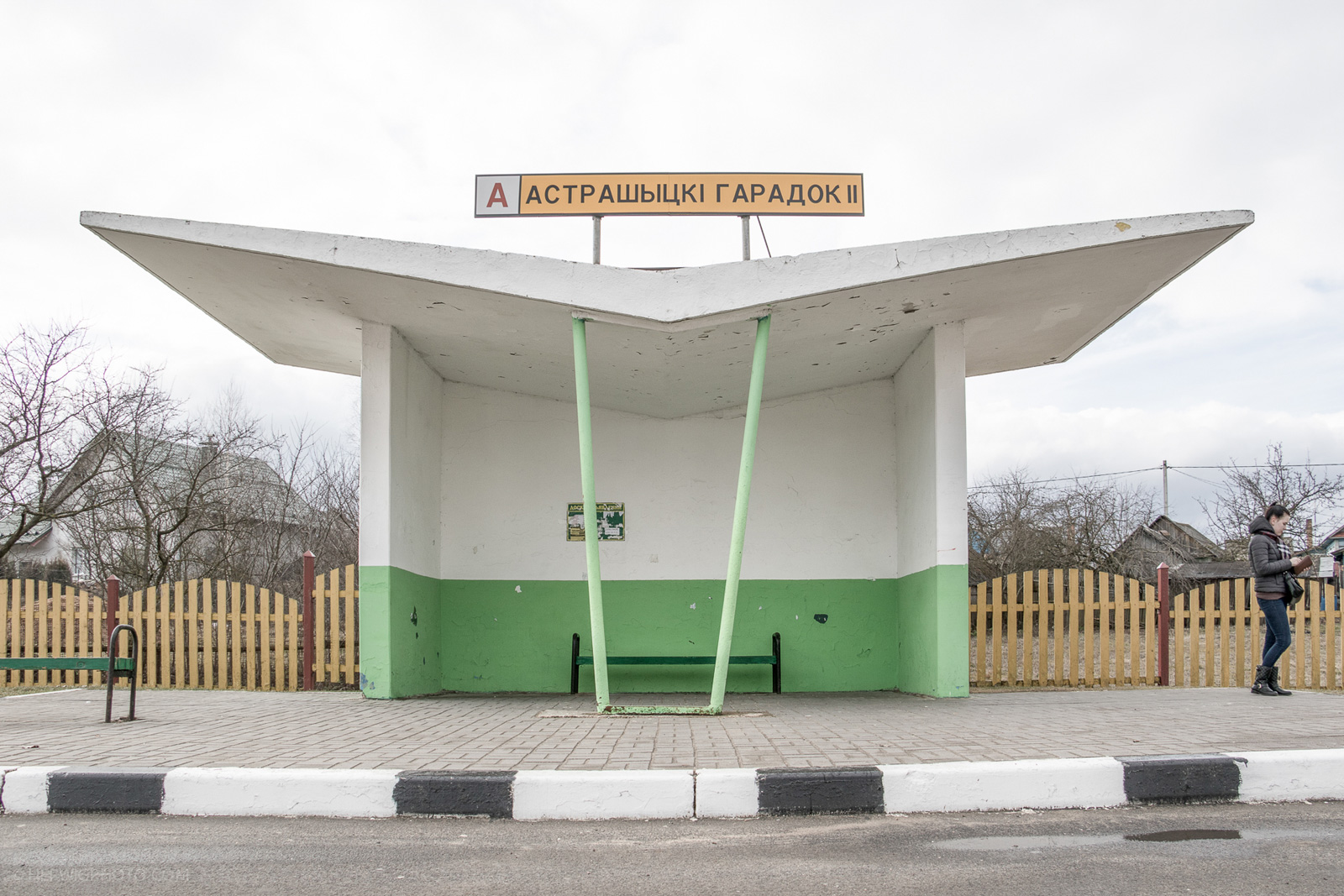
How has your Soviet bus stop project evolved?
From the initial set of structures I shot on my 2002 trip through the Baltic countries, the series really grew when my wife and I were living in Kazakhstan [in 2003]. I spent the three years exploring the five ‘Stans of Central Asia, and during this time the series grew in popularity online and was covered in a few magazines.
From there I was really hooked. I planned various trips for the sole purpose of hunting down more bus stops to photograph, before they disappear.
Is there much of a ‘bus culture’ in places like Khazhakstan and Lithuania? And are the bus stops you encountered still in use or merely decorative structures?
Buses were very important during the USSR, however many of the more remote bus stops are no longer in use since the bus system is not as strong as it once was. People are also moving from remote areas to cities, so many of the bus stops I photographed in my book are obsolete.
But since there was no real set rules on the design and function of the bus stop, their function varies greatly from the practical to the completely frivolous art installation.
The structures are among the most experimental architectural forms in these former Soviet countries: how and why was such freedom of expression allowed?
In many Soviet architecture universities, the bus stop was one of the students’ first projects and an opportunity to create something never seen before. Since it was considered a ‘minor architectural form’, it was not seen as threatening to any major ideological value – rather, it was encouraged as a medium for artists to have fun and bring pleasure to the people.
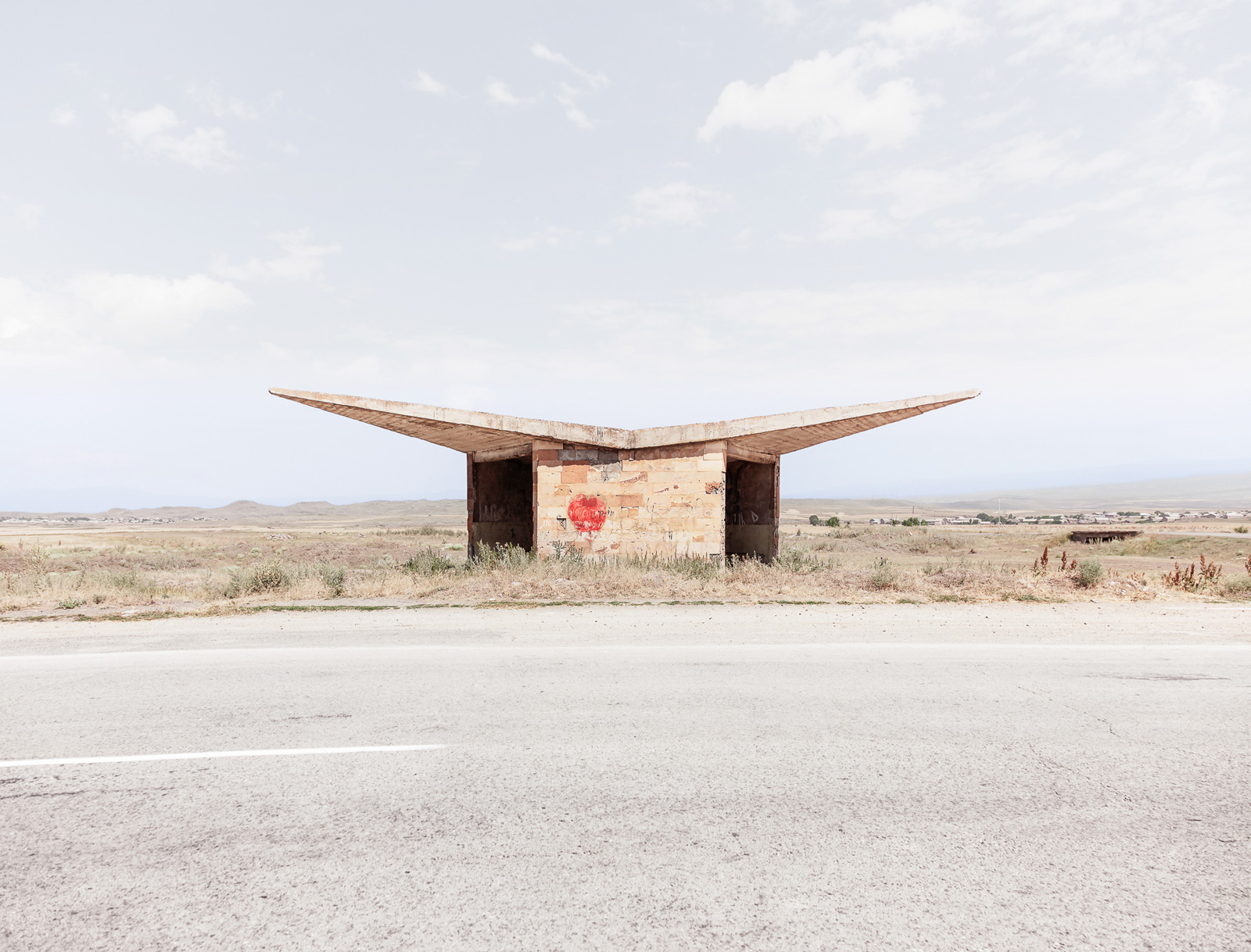
Is there a structure you particularly admire?
I have many favourites, including this one [pictured above] which was in the middle of a large expanse of open farmland and has actually three pointed wings. While feeling heavy and brutal, the bus stop also seems like it wants to be free and fly.
In the post-Soviet age, are they being preserved? And are they still being used as experiments?
I’ve heard that students still design crazy bus stops at university but I’ve not seen any being realised. Most of the bus stops in urban areas are already long gone, and have been replaced by ‘functional, mass-produced designs’, which is what we would have expected rather from the Soviet Union! A few are being preserved, repainted and maintained, sadly most are not seen as important but rather as a place to go to the toilet on a long drive…




